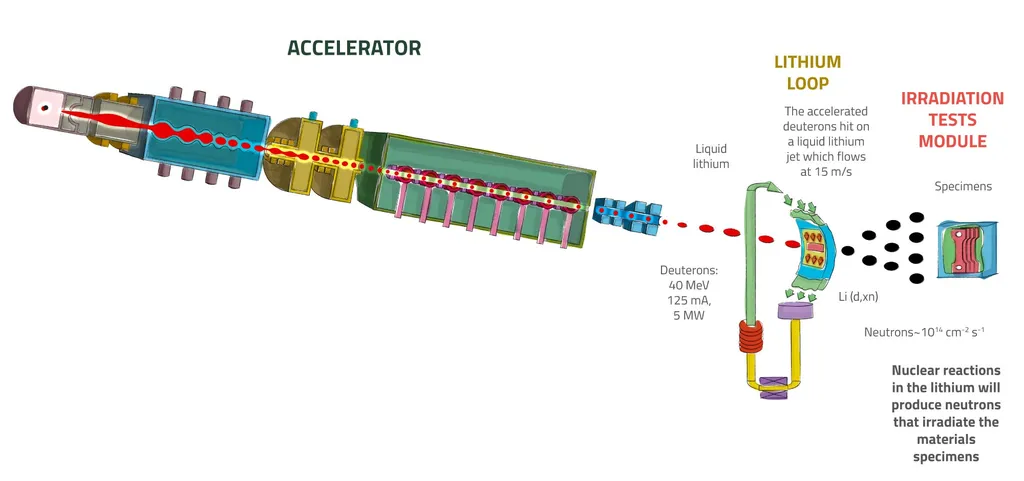In the heart of Granada, Spain, a groundbreaking project is taking shape, one that could significantly impact the future of nuclear fusion and the energy sector at large. The International Fusion Materials Irradiation Facility-Demo Oriented Neutron Source (IFMIF-DONES) is a collaborative endeavor aimed at testing materials for future fusion reactors. At the core of this facility lies a high-power accelerator system designed to generate an intense flux of neutrons, crucial for understanding and developing materials that can withstand the harsh conditions inside fusion reactors.
The accelerator systems (AS) of IFMIF-DONES are tasked with generating, accelerating, transporting, and shaping a deuteron beam with precise specifications: a 40 MeV beam with a constant current of 125 mA. This beam drives the stripping reactions with a liquid lithium jet, producing the necessary neutrons for material research. The design and development of this high-power driver have been ongoing for years, with numerous prototypes of critical technologies tested and refined.
Dr. Ignacio Podadera, lead author of the article published in the English-language journal “Nuclear Fusion” and a key figure at IFMIF-DONES España, explains, “The design of the accelerator systems has evolved significantly over the past decade. We’ve moved from conceptual designs to an engineering design ready for construction. This is a pivotal moment for the project and the field of nuclear fusion.”
The accelerator systems involve cutting-edge technologies, including radiofrequency systems and superconducting linear accelerators (LINACs). These technologies are not only crucial for the success of IFMIF-DONES but also have potential applications in other areas of the energy sector. The development and testing of these technologies could lead to advancements in particle accelerator design and radiofrequency systems, benefiting industries ranging from healthcare to energy production.
One of the most compelling aspects of this research is its potential to accelerate the development of fusion energy. Fusion reactors promise a nearly limitless source of clean energy, but they require materials that can withstand extreme conditions. The neutron flux provided by IFMIF-DONES will allow researchers to test and develop these materials, bringing us one step closer to practical fusion energy.
As Dr. Podadera notes, “The impact of this research extends beyond the immediate goals of IFMIF-DONES. The technologies we’re developing and the data we’re collecting will be invaluable for the broader energy sector. This is about more than just building a facility; it’s about advancing the field of nuclear fusion and contributing to a sustainable energy future.”
The project’s progress is a testament to international collaboration and the power of scientific innovation. With the engineering design now ready for construction, the next phase of the project is set to begin, bringing us closer to a future powered by fusion energy. The research published in “Nuclear Fusion” not only provides an overview of the current status of the accelerator systems but also highlights the potential of this groundbreaking project to shape the future of the energy sector.

